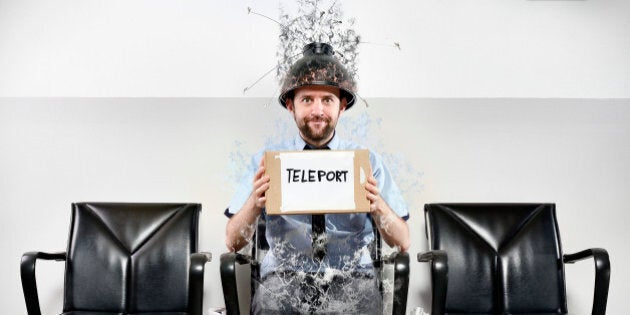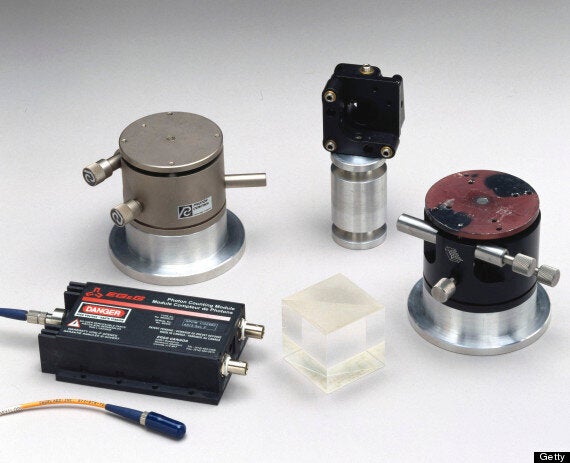
Scientists are inching ever closer to instantaneous mass transport.
As long as there isn't too much... mass.
A pair of independent experiments -- one from the University of Tokyo and the other from the Swiss Federal Institute of Technology in Zurich -- appear to have made tremendous strides in moving very small things across very small distances.
In the Tokyo experiment, as Popular Science reports, a qubit (a basic unit of information) was successfully transported 40 per cent of the time and reproduced at another point with an accuracy of about 88 per cent.
"A huge leap forward!" chimed the science journal.
Another headline declares it the 'dawn of the age of quantum teleportation.'
All that for a qubit?
Well, according to the scientists who conducted the Zurich experiment -- and teleported information about a quarter of an inch -- it does happen to be the first time information has been transported in what they call a 'solid-state system'.
"Usually in telecommunication, information is transmitted by electromagnetic pulses," study author Andreas Wallraff told ETH Life. "In mobile communications, for example, microwave pulses are used, while in fibre connections it is optical pulses."
In this case?
No physical carrier. Just pure (largely degraded) information.
And yes, Swiss researcher Andreas Wallraff did go ahead and use the term "beaming."
Which, happily, brings us to Star Trek. Remember how teleportation worked on the USS Enterprise? Basically, the ship's computer memorized the passenger down to the precise placement of every last atom. Then the transporter, as it was dubbed, breaks apart those atoms in one location before rebuilding them from scratch at the target destination, say Casperia Prime or Risa.
Yes, it wasn't fool-proof, and the system was known to go horribly awry on occasion.
(And even if you managed to arrive intact, there was also a risk of the dreaded condition known as 'Transporter Psychosis'.
Of course, most of us don't live in the Star Trek universe.
But that same principle, at its most essential level, seems to abide in the real world, where scientists say quantum teleportation is all about the mapping -- basically knowing the precise location of every teleport-able atom before the 'passenger' can be reconstructed on the other side.
The idea of quantum teleportation first gained traction in 1997, according to Science News. That's when physcists first managed to move a tiny percentage of the intended information over a tiny space. Since then, the magazine adds, particles of light (called photons) have been moved over increasingly large distances -- and much more reliably.

Now, how about very big things? Like, for instance, a human. And possibly an increasingly obese specimen, like the one that would surely result from a society that never walked anywhere ever again.
Well, as an article in the academic journal, The Conversation puts it, "the first step to teleporting a person is measuring and recording the position, direction of motion and energy of every particle in the body, which would require more data storage than will ever be available – much, much more."
"In fact, a conservative estimate would mean you’d need about 10 to the 22nd power gigabytes (1 followed by 22 zeros) of hard drive space. That’s a stack of hard drives about 20 light-years tall."
Needless to say, to even glimpse the top of that pile of hard drives, we'll need to fire up the warp engines -- and shovel quite a lot of dilithium crystal.
Also on HuffPost